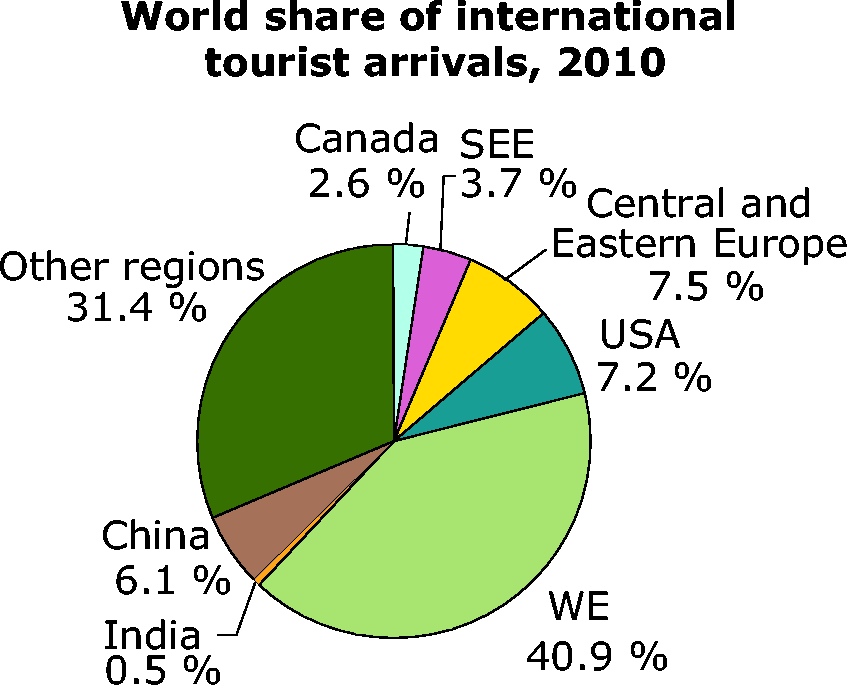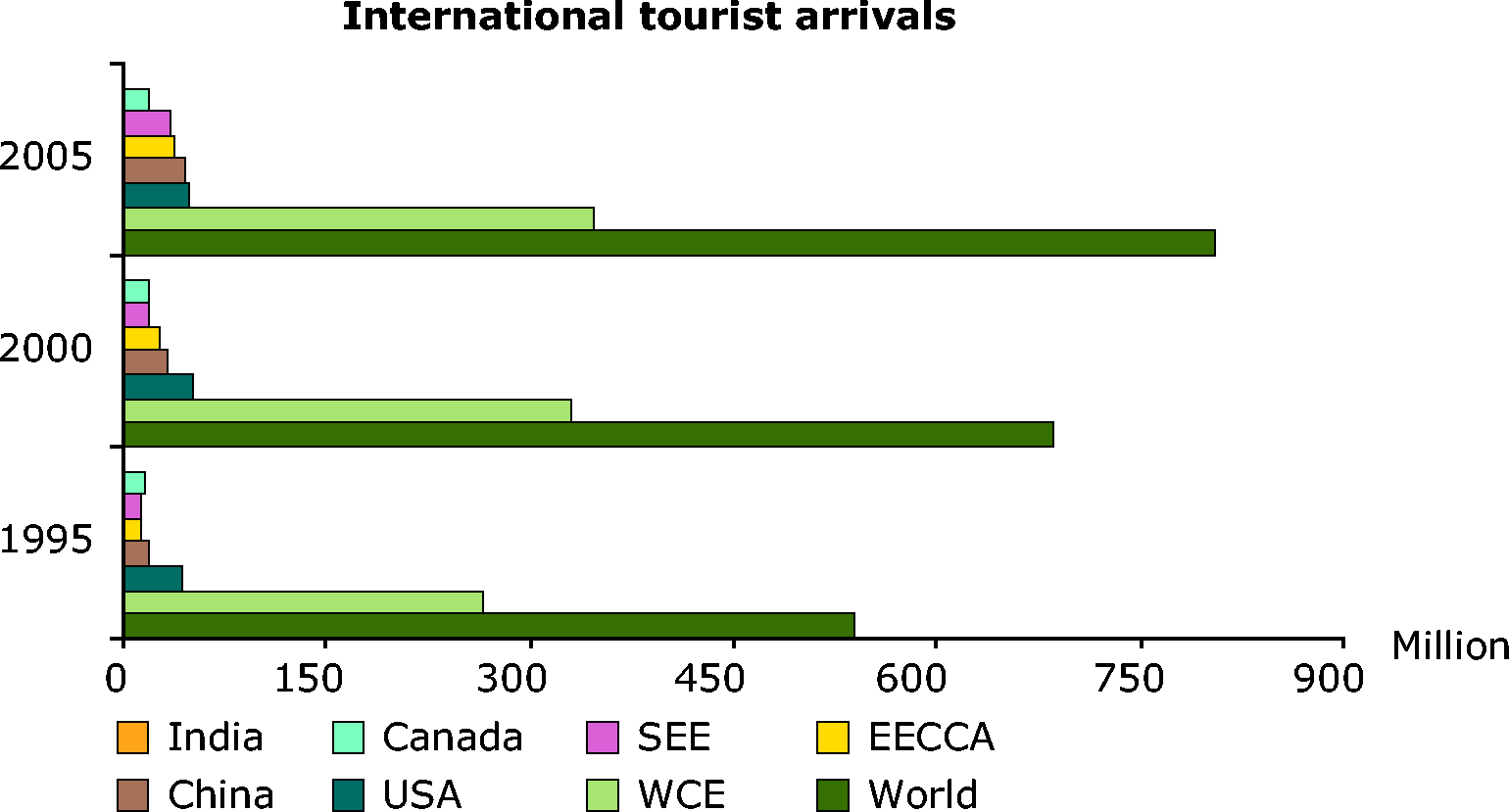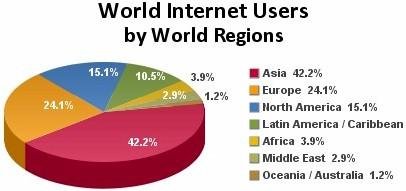Impact of the of the up and coming hospitality services and marketing trends
A service industry is composed of organizations which focus on providing services to other organizations and the final consumers as well. The hospitality and tourism sector is the widely known service sector whereby people who are on vacation or on business trips demand for services. As a result, the consumers of these services expect that the services being offered by such organizations should be of high quality (Bianca, 2012).
The kinds of services that the tourism and hospitality sector provides include lodgings, food services, travel, tourism, and sports and entertainment. Therefore, for an organization to continue receiving a reasonable number of customers, it needs to provide a wide range of services which consumers who are on vacation demand (Costa, 2009).
Social media marketing has been very effective in ensuring that organizations market their products adequately. In this perspective, organizations are forming groups in some of the major social networking sites such as Facebook, Twitter, MySpace and YouTube whereby customers are able to obtain information on the various products that the organizations offer (Denmark, 2012).
The customers are also able to compare the products being offered by different organizations thereby enabling them to choose the ones which they feel more comfortable with. In addition, most social networking sites offer advertisement opportunities whereby organizations place their advertisements for the customers to acquire information (Mather, 2009).
Since the number of people who use social media sites is increasing every day, customers with a particular interest in a certain company show interest once they pay attention to the company’s advertisement in the social media. This way, many service industries have been able to increase their customer base.
In addition, organizations have adopted platforms whereby they can be able to carry out a live chat with their customers and therefore answer all their queries regarding the services they offer. The idea of conducting marketing in the social media has greatly impacted on my thinking regarding developing marketing strategies for service organizations. I have noted that in order for an organization to be successful, it needs to get in touch with its customers in most of the social activities that they engage in.
Integrating with the society also serves as an effective way in which an organization can market its products to its customers. In order to attract many customers especially from the area where the organization operates, it is important for an organization to adopt the lifestyles that the society engages in. It should take responsibility for sponsoring the major activities that take place in the society. When an organization does this, it is able to identify itself with the members of the society.
As a result, the customers are able to demand the services that the company offers easily (Peter, 2010). The organization is able to win the confidence of the customers to an extent that this serves as marketing strategy for the organization. I have therefore observed that in order for a company to receive positive feedback from the society where it operates, it needs to participate in the activities that the society undertakes.
Rewarding loyalty is also an approach that organizations need to adopt. Because of the intense competition that is facing the service industry, organizations are inviting customers to test their products for free. There are other organizations which offer free services after a customer makes a significant number of purchases from the organization.
Such offers are often viewed by the customers as a form of appreciation by the organizations for the loyalty that the customers show to the organization (Shankar & Carpenter, 2012). This way, an organization is able to attract a larger number of customers as well as retain its existing ones.
Advertisements are very crucial for every business enterprise. However, there are certain business enterprises which advertise for the sake for advertising without putting into consideration whether the advertisements have any impact on the customers. Most organizations are today measuring the response rate to their advertisements in order to determine whether the advertisements they carry out represent a viable investment.
Organizations should analyze how many people respond to their advertisement in order to know whether they need to change their advertising techniques. Since the effects of advertising do not last for a long time, it is important for organizations to ensure that they do not invest heavily on advertisements.
From this concept therefore, I have noted that it is not how much an organization advertises, but it is the response rate to the advertisements that matters. Organizations should therefore ensure that they pay attention to the response rates of their advertisements in order to determine the areas where they need to make improvements (Boone & Kurtz, 2011).
How to change the management and leadership behavior within a service environment
Managing a service environment is a very complex process because it presents difficulties while measuring the output of an employee and the degree of satisfaction of the customers.
As a result, it is important to implement some specialized management techniques in order to ensure that the productivity of a service organization improves significantly (Denmark, 2012). An organization should therefore ensure that it constantly changes its management structure in order to ensure that it is able to deliver quality services to its customers consistently.
The service sector such as the tourism sector is an area that requires people to demonstrate professionalism in the activities that they undertake. However, this is not possible because of the difficulties encountered while measuring the productivity of the employees (Bhatti, 2012). In this perspective therefore, it is important to ensure that the employees are allocated supervisors who would be responsible for evaluating the quality of services that the employees deliver to the customers.
It is the responsibility of every employee to demonstrate professionalism in their assigned areas in order to ensure that they deliver quality services to the customers. This would ensure that the customers show positive relations with the organization. As a result, the customer base of the organization would increase significantly.
The management of a service organization therefore needs to ensure that activities of the employees are monitored closely in order to ensure that they deliver high quality services to the clients (Boone & Kurtz, 2011). The management of the organization should be in such a manner that it makes it possible to monitor all the activities that the employees undertake and the responses that they receive from the customers.
To ensure that the employees increase their productivity within the service sector, it is important for an organization to treat the employees as an asset. This means that the management of an organization should implement measures which increase the productivity of the employees such as training and giving rewards.
It is the responsibility of an organization to ensure that the employees are trained on the various ways in which that they can improve on their service delivery to the customers who visit the organization (Kandampully, Mok, & Sparks, 2001). This would ensure that the organization is able to compete effectively with other organizations around the world. Training also exposes the employees to new skills of operating in the service sector thereby increasing their productivity and sensitivity to the needs of the customers.
It is important for a service organization to offer the customers with opportunities for feedback. In this context therefore, the managers can get to know the employees who are productive and those who deliver quality services to the customers. In addition, the organization should be able to identify the employees who need further training.
The managers of a service organization should also able to identify the weaknesses and strengths of the employees. This way, the management is able to place the employees in the areas where they demonstrate expertise. This makes the management of an organization easier and hence increases its productivity and competitiveness.
It is important for the employees within the service industry to be given specialized training once they begin working inside the organization. An organization should ensure that employees are oriented to all the operations of the organization before they can be trusted with sensitive operations.
When the employees are given the special training, they are able to understand how the organization operates thereby enabling them to deliver the right services to the customers (Ford, Sturman, & Heaton, 2011). In addition, with the special training, the employees are able to adapt quickly to the operations of the organization. The specialized training makes the process of managing the organization easier thereby ensuring that the organization does not experience any drop in productivity once new employees are hired.
The financial performance of an organization plays a very critical role in determining whether the productivity of an organization increases or drops. Every organization is established with the motive of realizing returns on investment. It is therefore the responsibility of the managers within the service organization to ensure that the people who are entrusted with the responsibility of managing the organizations funds are accountable and transparent (Mather, 2009).
In addition, it is the responsibility of an organization to survey the needs of the customers to fully understand the costs of implementing the services which the customers demand (Prideaux, Moscardo, & Laws, 2006). The management of a service organization therefore needs to ensure that the finance department keeps abreast with the current trends in the service industry in order to ensure that there is transparency and accountability in the use of finances within the organization.
Developments within the e-commerce and why it should be incorporated
The growth of the internet has provided a way in which organizations engage in the provision of revolutionary products and services. The most important discovery is the introduction of the e-business platform whereby people are able to carry out their business transactions over the internet conveniently (Beynon-Davies, n.d).
The manner in which websites are structured is also changing since they are being structured as organized market places. This has led to the development of applications such as portals, large enterprise sites, business to business models, and business to consumer models (UKPLC, n.d). These applications have been observed to create centralized virtual market places whereby consumers and producers can be able to interact conveniently and in a faster manner.
E-commerce is a subset of e-business whereby consumers and producers are able to exchange goods and services for cash payment or for other goods and services. Customers love to have access to their goods and services on a 24 hour basis in any day of the week (Wynn, 2008). By taking business activities online, customers have been able to realize their goal of accessing business activities at any time in any day of the week. Online business activities are fast, reliable, and more user friendly. This has made the e-commerce strategy a success.
The Business to Consumer (B2C) marketing strategy is a major advancement in e-commerce. It describes a product or service, or a business strategy which is targeted to the consumer market. The B2C marketing strategy is an effective marketing strategy and many businesses are incorporating it into their daily business processes (Rockley & Cooper, 2012).
The primary goal of B2C is to convert those people who shop online into consistent buyers. B2C strategy is aimed at ensuring that transactions take shorter durations and that they meet the interests of the customers immediately. B2C is designed in way that enables it to maximize the value of the transaction when a consumer acquires a product or service (Bricklin, 2012).
B2C is important in that it helps in the consumerism of goods and services. The businesses which execute better marketing strategies for their goods and services are the ones which are able to win a large number of consumers. Therefore, with proper adoption of the B2C marketing strategy, businesses are able to acquire a large number of customers thereby increasing their sales significantly (Wynn, 2008).
This is because this form of marketing is able to educate the consumers on the way in which they can address their needs thereby enabling them to derive maximum satisfaction from the goods and services being offered by organizations.
Content provision is a popular B2C marketing strategy. In this perspective, the business relies on premium prescription so that it can deliver specialized content to its customers. The consumer is therefore provided with personalized information which other people cannot gain access to under normal circumstances.
B2C is also known to provide a marketplace to the consumers and manufacturers. The adoption of B2C marketing has enabled businesses to market their products direct to the customers. An example of a market place where B2C marketing is applied is eBay (UKPLC, n.d). Here customers come across different people with different products and they therefore have the option of selecting the product that meets their needs adequately.
There were times when businesses used to market their products in a multi-channel manner. In this perspective, businesses used to have a physical store and website which acted as a virtual store. However, in today’s businesses, most businesses apply B2C marketing tools such as Search Engine Optimization, Affiliate marketing, Consumer Generated Media, Event Marketing, Email/Text marketing, Cause Marketing, Mobile Marketing, and Social marketing to enable them win a large number of customers (Bricklin, 2012).
Pay-Per-Click (PPC) marketing is a form of B2C marketing strategy whereby a company is supposed to pay a certain amount every time their ad is clicked by a customer using a search engine.
In this perspective, organizations purchase specific search engine words hoping that potential customers will see them while using their search engine. This form of marketing enables businesses to gain access to customers who would be looking for similar products over the internet (Bhatti, 2012). An organization is therefore able to increase its customer base significantly.
B2C marketing strategy has also been effective in facilitating Word of Mouth Marketing (WOM). Companies such as McDonalds have been known to use WOM in order to win over more customers. For example, most moms have been observed to blog about the experiences that they have had with McDonalds in terms of health, finances and overall satisfaction (Rockley & Cooper, 2012).
This has served as a marketing tool for the company thereby increasing its customer base significantly. It is therefore evident that if a company takes advantage of the B2C marketing strategy, it is able to increase its customer base and profitability significantly.
References
Beynon-Davies, P. Benefits of B2C e-commerce. Web.
Bhatti, S. (2012). B2C Marketing Stategies. Web.
Bianca, A. (2012). Hospitality Management Strategies. Web.
Boone, L. E., & Kurtz, D. L. (2011). Contemporary Marketing. New York: Cengage Learning.
Bricklin, D. (2012). What’s been successful in B2C. Web.
Costa, R. C. (2009). Management in the Hospitality Industry. Web.
Denmark, J. M. (2012). Marketing for Hospitality & Tourism. Web.
European Environmental Agency. (2010). World Share of International Tourist Arrivals. Web.
Ford, R. C., Sturman, M. C., & Heaton, C. P. (2011). Managing Quality Service in Hospitality: How Organizations Achieve Excellence in the Guest Experience. New York: Cengage Learning.
Kandampully, J., Mok, C., & Sparks, B. A. (2001). Service Quality Management in Hospitality, Tourism, and Leisure. New York: Routledge.
Mather, L. (2009). The Top Eight Marketing Tips for the Service Industry. Web.
Peter, C. (2010). Service Sector Marketing Strategies. Web.
Prideaux, B., Moscardo, G., & Laws, E. (2006). Managing Tourism and Hospitality Services: Theory and International Applications. London: CABI.
Rockley, A., & Cooper, C. (2012). Managing Enterprise Content: A Unified Content Strategy. Boston: New Riders.
Shankar, V., & Carpenter, G. S. (2012). Handbook of Marketing Strategy. New York: Edward Elgar Publishing.
UKPLC. B2C is more advanced and competitive. Web.
Witinger. (2010). Internet / E-commerce Statistics. Web.
Wynn, A. A. (2008). Business to Consumer Marketing. Web.
Appendices
The figure below shows the market share of the hospitality and tourism sector in various parts of the world. It is therefore important for organizations in the hospitality sector to ensure that they adopt effective customer relations and marketing strategies so that they can remain competitive in the tourism industry.

Source: European Environmental Agency, 2010
The figure below illustrates that the number of tourists who visit various parts of the world has been on a constant rise. This is an indication that the leadership and marketing strategies being adpted by the hospitality and tourism sector are meeting the needs of the customers.

Source: European Environmental Agency, 2010
The figure below shows the percentage of people who are able to access internet servvices in different parts of the world. This way, it is possible for an organization to know the regions where the e-commerce strategy would be most effective.

Source: Witinger.com